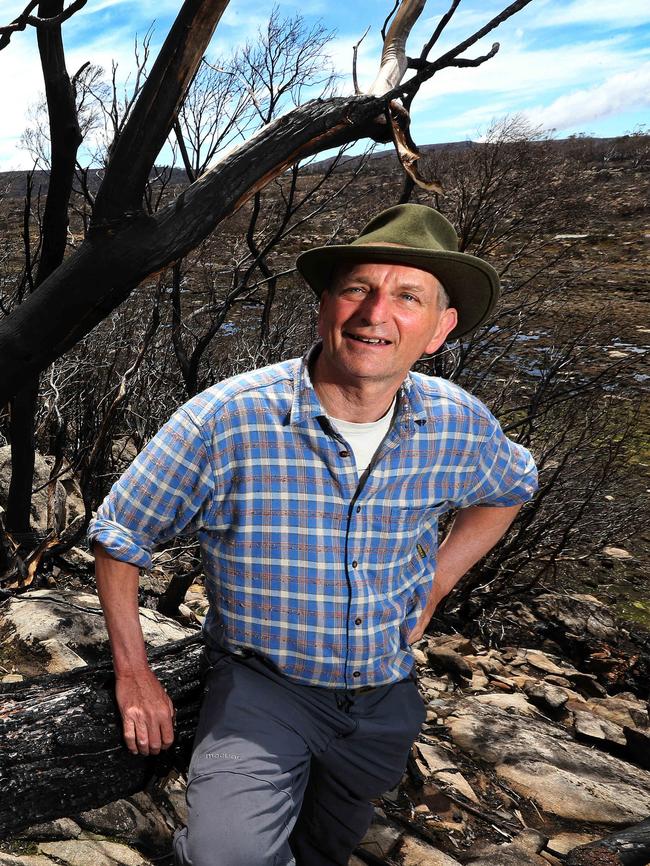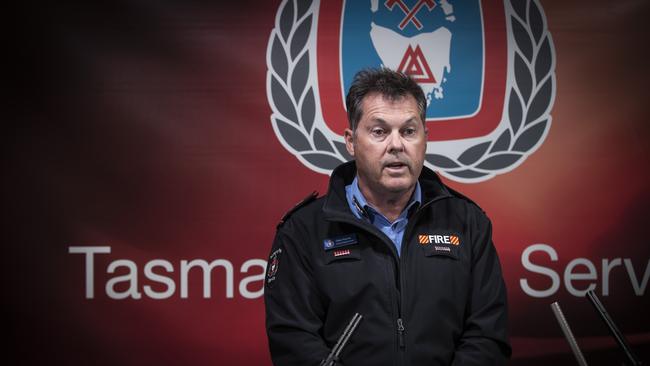Leading UTAS fire expert warns of the threat of potentially disastrous fires hitting Hobart
As the state prepares for twos days of severe heat, a leading fire expert has warned of Hobart’s extreme vulnerability to bushfire attacks, labelling Tasmania’s capital the country’s most at risk major city.
Tasmania
Don't miss out on the headlines from Tasmania. Followed categories will be added to My News.
HOBART’S fire threat has been likened to playing Russian roulette with a half-loaded chamber by a leading University of Tasmania fire expert who says “eventually we’re going to get hit”.
The comments from UTAS Pyrography and Fire Science professor David Bowman come as the state prepares for severe heat on Thursday and Friday — weather conditions he said would expose the state’s bushfire vulnerability.

“All we need is a heatwave like Friday [38C] and the whole place is lighting up and we’re going to have a bad problem on our hands,” Prof Bowman said.
“Hobart’s problems are there is so much old housing stock and bushland surrounding from multiple directions.
“The Domain is problematic. We shouldn’t have that level of fuel load right in the middle of the city. A fire there combined with full-blown northerly winds would be very dangerous.”
Hobart City Council on Tuesday night unanimously voted to develop an ember attack strategy following Prof Bowman’s advice to council that most people, even in bushfire-prone areas, did not have a bushfire plan.
DISASTER TRIGGERS CHANGE: MAKE A SAFER TASMANIA
A preliminary UTAS research study into Hobart’s bushfire threat found that 65 per cent of the 224 Hobartians surveyed were worried about the risk of bushfire where they live.
Lord Mayor Anna Reynolds said Prof Bowman’s research highlighted that “a whole heap of work” needs to happen to build community resilience and a clearer picture about the risks Hobart faces.
More than one in five [22 per cent] of survey participants said they had never discussed what they would do in a bushfire situation, and 8 per cent said they did not plan to leave unless a bushfire was immediately threatening their home.
“A fine-scale study of fire risk, including ember attack, under a wide range of current and future climate conditions is essential to inform and motivate residents about managing their fire risk,” Prof Bowman said.
“This should be seen as the first step in a larger program to upskill the community to manage bushfire exposure and develop actionable plans.”
He said there needed to be clearer guidelines in place for Tasmanians about how to respond when bushfires occur.
“We’re often told ‘leave early’, but where do we go? How do we get there?,” he said.
“Think of the traffic gridlock at peak hour on a normal day. Well, imagine if somewhere like Tolmans Hill was hit by fires and hundreds of people flooded the roads. That’s how people die during a serious fire outbreak.”
Prof Bowman also suggested HCC assist residents in retrofitting their homes and gardens to mitigate fire risk.
Bureau of Meteorology senior forecaster Simon Lewis said “two very hot days” today and tomorrow, combined with an increase in winds and long term rainfall deficiencies over Tasmania’s East would bring a spike in fire dangers.
Tasmania Fire Service acting regional chief Dale Rayner said Tasmanians needed to be prepared for “potentially very bad outcomes” as severe heat on Thursday and Friday brings with it a total fire ban until 2am Saturday,

“Community members need to prepare themselves. If you live in or around the bush you are at significant risk,” he said.
“The severe rating means properties won’t be defendable. You need to make an early decision about leaving, review your bushfire plan and think about where your family is.”


